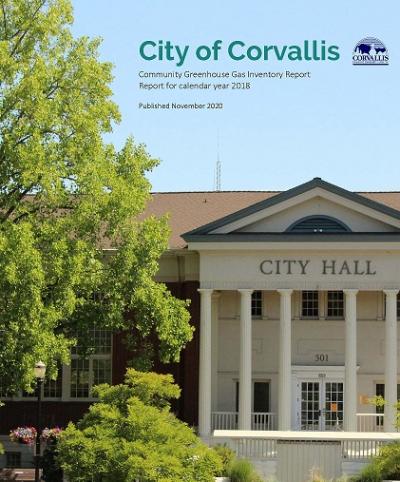Community Greenhouse Gas Inventories
In 2016, the Corvallis City Council adopted the Corvallis Climate Action Plan (CAP) in which the City set a goal to reduce the community’s greenhouse gas emissions 75% below 1990 levels by 2050. The CAP describes actions for adaptation and mitigation of climate change through a range of municipal and community wide action points. In order to better understand our community’s emissions and progress toward the CAP’s target, the City of Corvallis has completed two Community Greenhouse Gas (GHG) Inventories – one for 2012 and one for 2018. The Climate Action Advisory Board now guides the implementation of the Corvallis Climate Action Plan, including monitoring community greenhouse gas emissions.
Total emissions in 2018 for the Corvallis community are estimated at 1,298,351 metric tons of carbon dioxide equivalent (MT CO2e), roughly 57,157 MT CO2e higher than 2012. This represents an approximate 4.6% increase in emissions compared to 2012, with a population increase of 7.7% over the same time. While a decrease in per capita emissions is good, the City’s CAP goals seek a reduction of 75% in total emissions from 1990 levels irrespective of population.
The largest source of emissions in Corvallis is the consumption of food, goods, and services, which was responsible for nearly half of all emissions from our community. Consumption is also the fastest growing source of emissions at 11.8%. In several other areas, emissions increased at a higher rate than population growth. Personal and commercial vehicle related emissions rose 9.1% and solid waste increased by 8.9%. Furthermore, while emissions associated with electricity use decreased, per capita electricity usage increased from 2012 to 2018. The reduction in emissions is attributed to the availability of cleaner electricity sources, rather than a behavioral change within the community. These numbers indicate a trend that must be reversed if the community is to reach its climate goals.
For details, here are links to the 2018 Community Greenhouse Gas Inventory Report and the 2012 Community Greenhouse Inventory Report.
